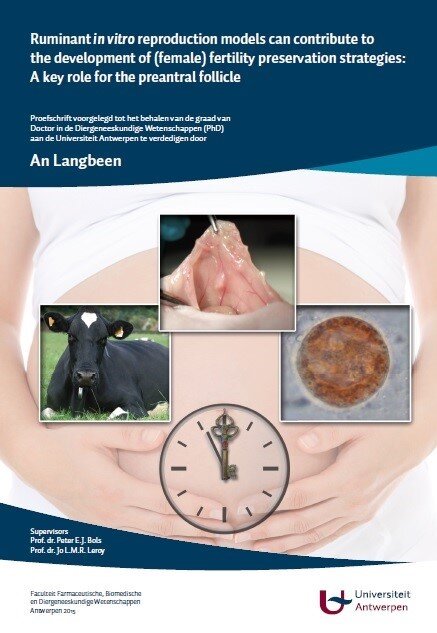Ruminant in vitro reproduction models can contribute to the development of (female) fertility preservation strategies: A key role for the preantral follicle
An Langbeen, DVM, PhD

Abstract
The doctoral research of Dr. An Langbeen concentrates on the development of strategies preserving the fertility of women and female mammals by freezing oocytes or follicles. Quiescent ovarian follicles are in an earlier developmental stage as compared to mature oocytes. They establish the limited ‘ovarian reserve’ located in the ovarian cortex, from which several are activated in each sexual cycle. Human research material is very scarce due to ethical and practical constraints. Infinitely available, ruminant (mostly bovine) material on the other hand seems a worthy alternative to study female reproductive physiology. Firstly, a review is given on currently used techniques available for women with a hampered reproductive potential. Nowadays, there is an emerging need for routinely available (human) fertility preservation strategies. Pre-pubertal, pubertal and adult female patients surviving cancer are the largest and still growing group of interest. A second, less important indication, is ‘social freezing’ which gains a lot of attention in the current career-orientated society. To preserve optimal chances on reproductive success, (a part of) the reproductive potential is frozen for later in vitro production of embryos. A third indication is the preservation of endangered animal species’ genetics, or the genetic material of individual animals with high genetic merits.
The studied strategies mainly focus on the use of preantral follicles (PAF). Based on a literature search, 4 specific sub-fields are defined:
- non-invasive viability assessment techniques for PAFs;
- cryotolerance of PAFs;
- ischemia and graft rejection of transplanted ovarian tissue;
- in vitro culture systems for large animal and human PAFs.
Within each of these fields, similar techniques currently available in ruminant reproductive research are listed and matched with remaining challenges in human medicine. The research presented in this thesis contributes to a better characterization of these PAFs, a better understanding of cryotolerance and possible damage and follicle viability using bovine tissue. By using these in vitro research models, the use of animals for research purposes will decrease. In both the human and animal reproductive field, there are still major remaining issues where a combined research effort can effectively increase knowledge and additional insights.